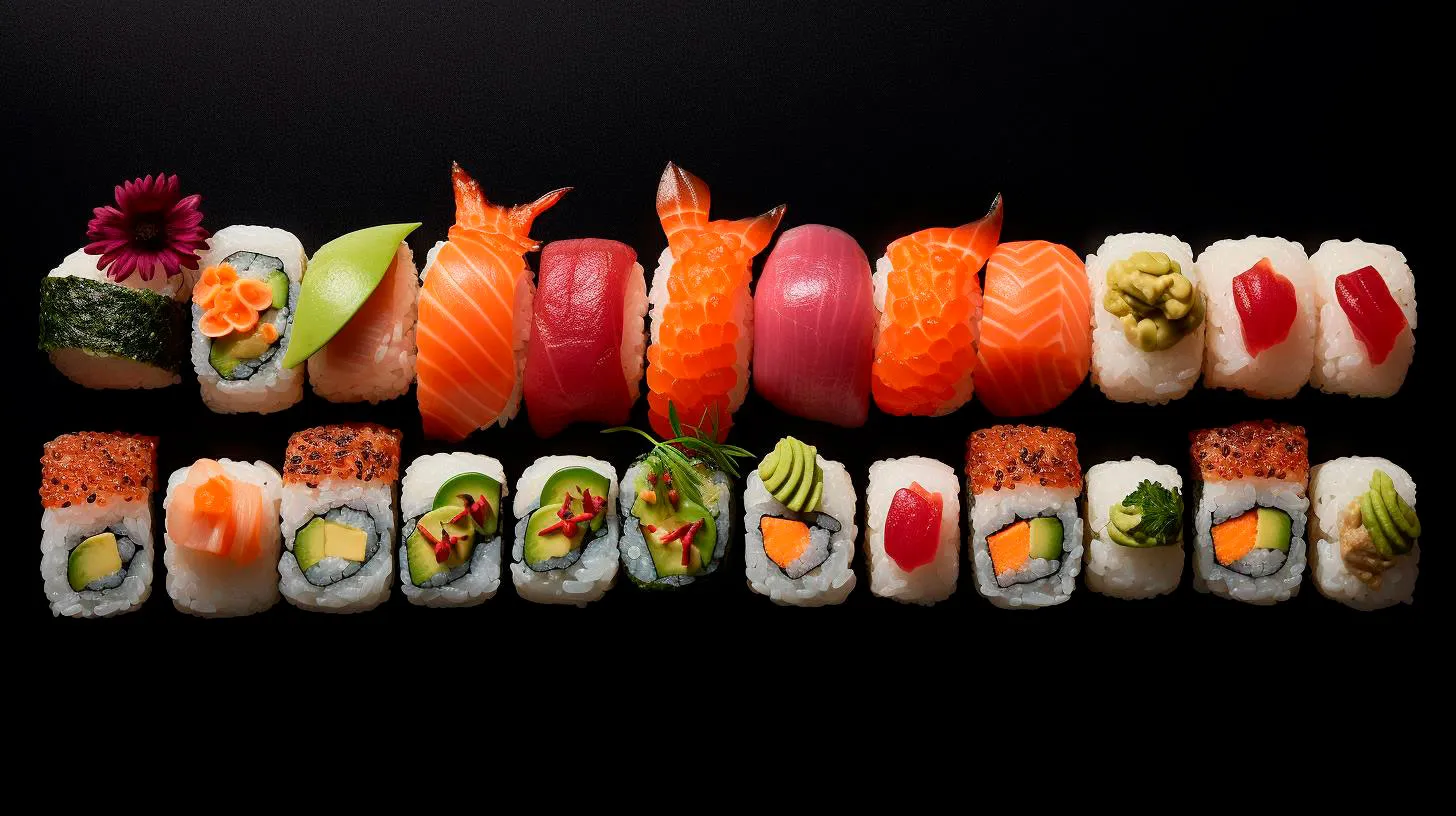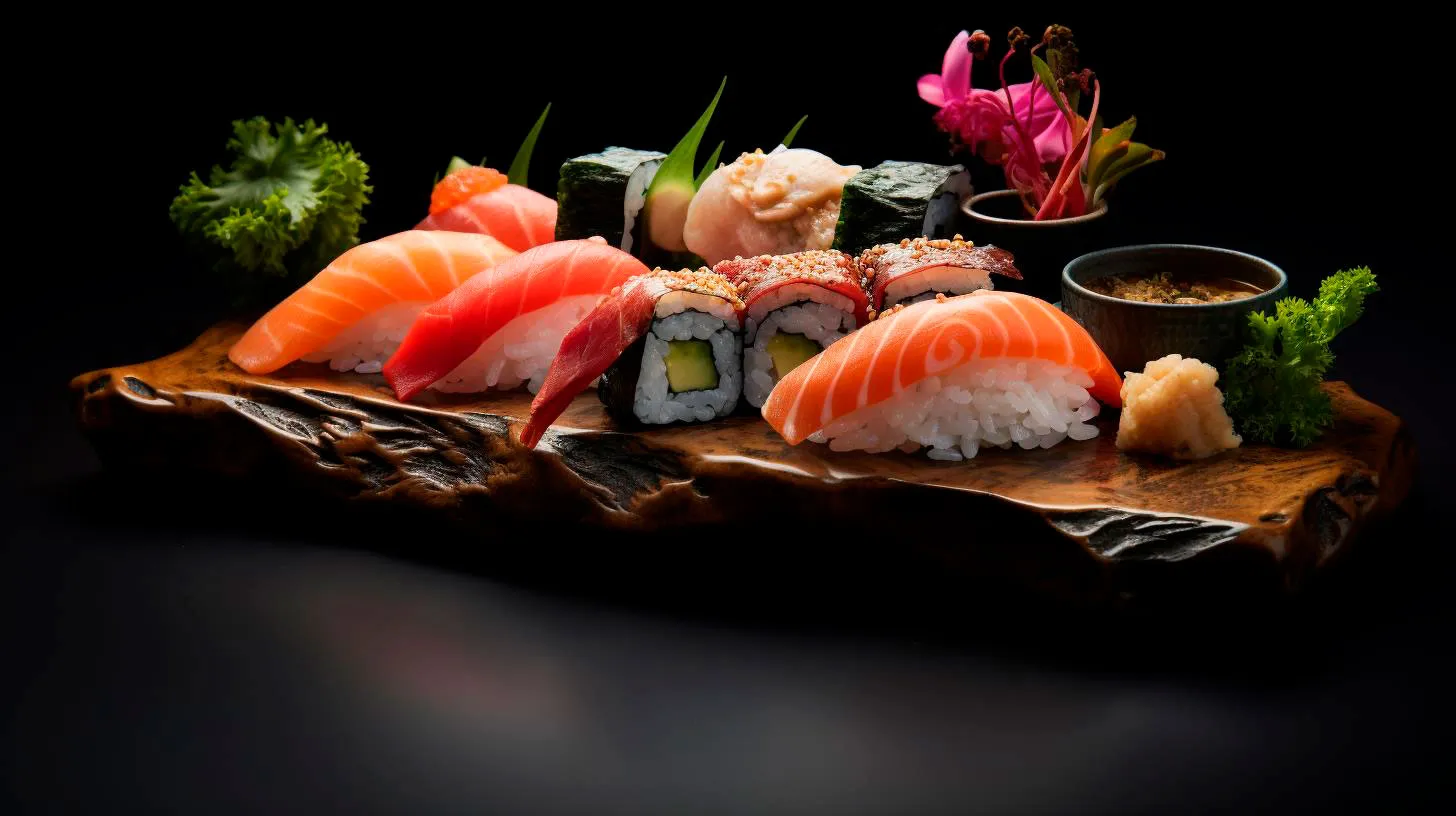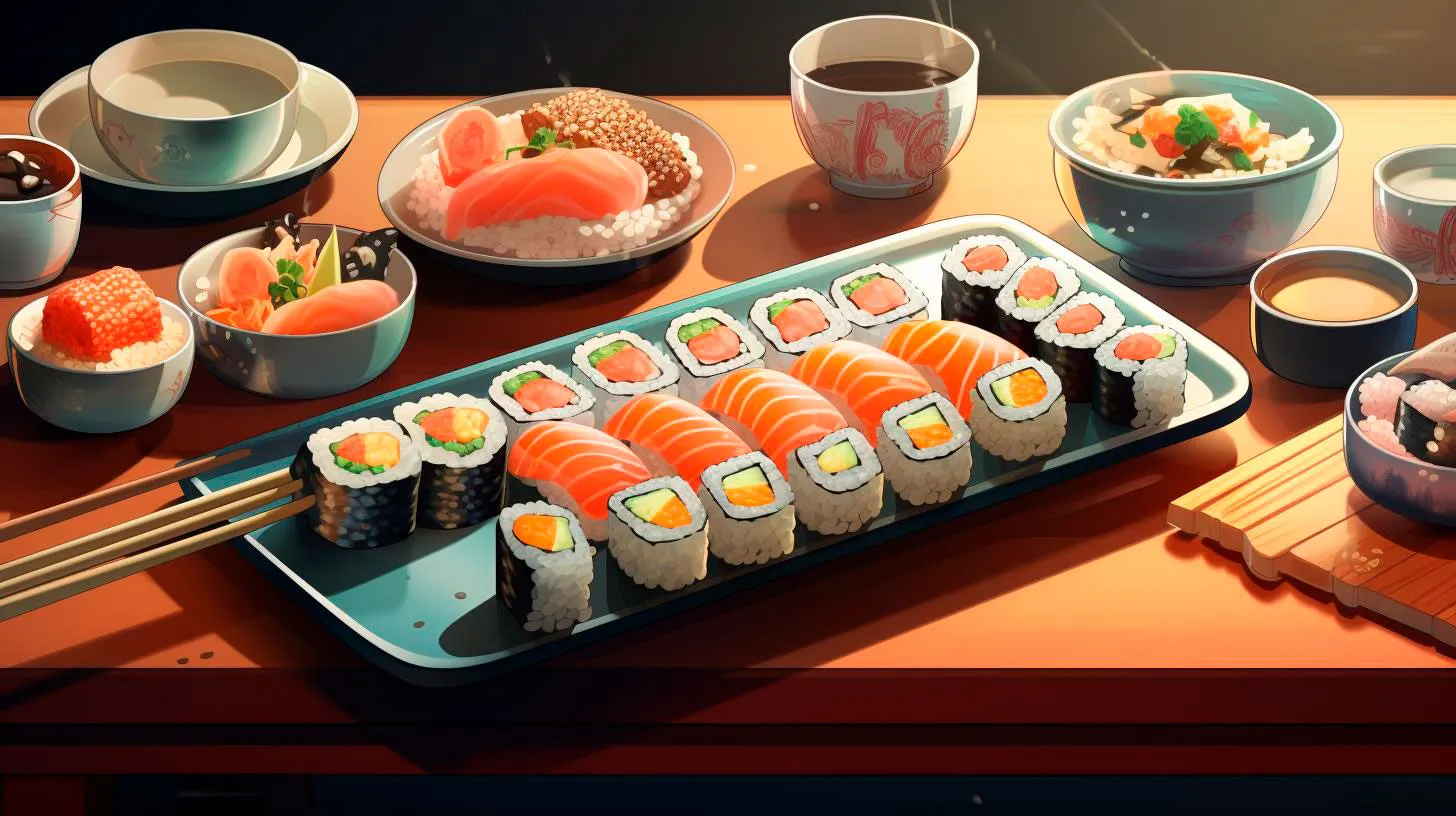Creativity Meets Tradition: Innovative Recipes with Sushi Rice as the Star
In this blog post, we explore the creative possibilities of sushi rice and how it is being used to create exciting and delicious dishes that go beyond the traditional sushi experience.
The Versatility of Sushi Rice
Sushi rice, also known as shari, is the foundation of any sushi dish. It is a short-grain rice variety that is specially seasoned with vinegar, sugar, and salt, giving it a distinct tangy and slightly sweet flavor. The sticky texture of sushi rice is what makes it ideal for shaping into various sushi forms. However, its versatility extends beyond sushi rolls. Let’s explore some innovative recipes that showcase the adaptability of sushi rice.
1. Sushi Rice Bowls
Sushi rice bowls, also known as chirashi bowls, are a popular alternative to sushi rolls. These bowls are a colorful and wholesome combination of sushi rice topped with a variety of fresh vegetables, proteins like grilled chicken or shrimp, and flavored with savory sauces like teriyaki or sesame dressing. Some key takeaways include:
- Sushi rice bowls are a nutritious and well-balanced meal option.
- They offer endless customization possibilities based on personal preferences.
- Chirashi bowls are visually appealing, making them perfect for Instagram-worthy food photos.
2. Sushi Rice Salad
Imagine a fusion of Japanese and Western flavors in a refreshing salad bowl. Sushi rice salads combine the unique texture and flavor of sushi rice with a variety of crisp vegetables, herbs, and dressings. These salads are a great way to enjoy the taste of sushi without the need for raw fish. Key takeaways for sushi rice salads include:
- Sushi rice salads offer a delightful mix of tastes and textures, from crunchy vegetables to tangy dressings.
- They provide a lighter alternative to traditional sushi rolls.
- The versatility of sushi rice allows you to experiment with various flavor profiles and ingredients.
3. Sushi Rice Stuffed Vegetables
Sushi rice is a fantastic filling for roasted or grilled vegetables. The sticky texture of sushi rice helps hold the vegetables together, creating a visually striking and flavorful dish. From stuffed bell peppers to zucchini boats, these sushi rice-filled vegetables are a showstopper on any dinner table. Key takeaways include:
- Sushi rice adds a delightful texture and flavor to the roasted or grilled vegetables.
- Stuffed vegetables are a great way to incorporate more vegetables into your diet.
- Sushi rice can be customized with different seasonings and spices to suit individual tastes.
Key Benefits of Using Sushi Rice
Beyond its culinary versatility, sushi rice offers several benefits that make it an appealing choice for innovative recipes. Here are some key advantages:
- Gluten-free: Sushi rice is naturally gluten-free, making it suitable for individuals with gluten intolerances or sensitivities.
- Source of Energy: Sushi rice provides a good source of carbohydrates, supplying energy for daily activities.
- High Fiber Content: Sushi rice contains dietary fiber, which aids digestion and helps maintain a healthy gut.
- Low in Fat: Sushi rice is naturally low in fat, making it a healthy choice for those watching their calorie intake.
Innovation in Sushi: Embracing Tradition with a Twist
As the culinary world continues to evolve, chefs and home cooks are finding new and creative ways to reinvent traditional dishes. Sushi rice, with its perfect stickiness and unique flavor, offers endless possibilities for experimentation. By pushing the boundaries of tradition, we can discover a world of innovative recipes that showcase the versatility of sushi rice.
Whether you prefer sushi rice bowls, salads, or stuffed vegetables, these unconventional sushi recipes offer a delicious fusion of flavors and textures. Embrace your culinary creativity and let sushi rice be the star of your next innovative dish!
From Sticky to Tender: Exploring the Textural Variations of Sushi Rice
In this article, we will dive into the fascinating world of sushi rice, exploring its different textural variations and how they contribute to the sushi experience.
The Art of Sushi Rice
Sushi rice, or “shari” as it’s known in Japanese, is a special type of short-grain rice that has been seasoned with a combination of vinegar, sugar, and salt. This seasoning process is vital as it provides the distinct tangy and slightly sweet flavor that complements the fresh fish and other ingredients used in sushi rolls.
However, what truly sets sushi rice apart is its texture. The skillful preparation of sushi rice requires attention to detail and precision. Achieving the perfect texture is the key to a successful sushi dish.
Sticky vs. Tender: The Textural Variations
1. Sticky Rice
- Sticky sushi rice, also known as “mochigome,” is characterized by its dense and chewy texture.
- Sticky rice is achieved by cooking the rice with a slightly higher water-to-rice ratio, resulting in a stickier consistency.
- Advantages: Sticky rice holds the ingredients together, allowing for easier shaping and rolling of sushi.
- Key takeaway: Opt for sticky rice when making maki rolls or nigiri to ensure the ingredients stay intact.
2. Tender Rice
- Tender sushi rice, also referred to as “uruchimai,” has a softer and more delicate texture.
- Tender rice is achieved by using a lower water-to-rice ratio during the cooking process, resulting in a lighter and fluffier grain.
- Advantages: Tender rice allows the flavors of the fish and other ingredients to shine, as it doesn’t overpower their taste.
- Key takeaway: Choose tender rice when serving sashimi or other sushi styles that focus on the freshness and quality of the fish.
The Importance of Textural Variation
Understanding the textural variations of sushi rice is crucial as it can greatly enhance the overall sushi experience. Each type of sushi rice brings its own unique qualities to the table, allowing for a diverse range of sushi creations. Whether you prefer sticky or tender rice, it’s important to choose the right texture based on the type of sushi you’re making or enjoying.
Additionally, textural variation adds depth and complexity to sushi rolls. When combined with various fillings, the contrast of textures creates a harmonious balance in every bite. The slightly chewy texture of sticky rice can provide a satisfying mouthfeel, while the tenderness of the rice can offer a delicate and refined experience.
Key Takeaways
- Choose sticky rice for maki rolls and nigiri to ensure the ingredients stay together.
- Opt for tender rice when serving sashimi or other sushi styles that focus on the freshness of the fish.
- Textural variations of sushi rice add complexity and depth to sushi rolls.
- The contrast of textures in sushi creates a harmonious balance in every bite.
Conclusion
Next time you indulge in a piece of sushi, take a moment to appreciate the often-overlooked star of the dish – the sushi rice. The textural variations of sticky and tender rice greatly contribute to the overall sushi experience, ensuring a delightful combination of flavors and sensations. Whether you prefer the chewiness of sticky rice or the delicacy of tender rice, each bite tells a unique story of craftsmanship and culinary excellence. So, explore the fascinating world of sushi rice and discover the diverse textural possibilities that await you!
The Perfect Blend: Unlocking the Secrets of a Flavorful Sushi Rice
In this article, we will dive deep into the world of sushi rice and uncover the secrets to achieving the perfect blend. Whether you’re a sushi enthusiast or a curious foodie looking to up your culinary game, these valuable insights will set you on the path to becoming a sushi rice master.
The Essence of Sushi Rice
Before we dive into the secrets, let’s first understand the essence of sushi rice. Unlike ordinary steamed rice, sushi rice is more than just a side dish. It plays a vital role in harmonizing the flavors of various sushi ingredients, enhancing the overall taste experience.
Here are some key points to consider about sushi rice:
- Sushi rice has a sticky texture that holds the sushi roll together.
- It is seasoned with a combination of rice vinegar, sugar, and salt.
- The rice should have a shiny appearance and a subtly sweet and tangy taste.
The Secrets to Flavorful Sushi Rice
1. Rice Selection:
The foundation of great sushi rice lies in selecting the right type of rice. Short-grain Japanese rice, such as Koshihikari or Calrose, works best due to its sticky texture. These types of rice are high in amylopectin, a starch that contributes to the rice’s stickiness.
2. Rice Washing:
Properly washing the rice is crucial to remove excess starch and achieve the desired texture. Rinse the rice thoroughly under cold water until the water runs clear. This step ensures the rice won’t become too sticky or mushy.
3. Rice cooking:
Cooking sushi rice requires precision. Follow the recommended water-to-rice ratio and cook it in a rice cooker or on the stovetop. Avoid opening the lid during the cooking process, as it can interfere with the rice’s moisture absorption and texture development.
4. Seasoning:
The seasoning mixture, also known as sushi vinegar, is what gives sushi rice its distinct flavor. A typical sushi vinegar recipe includes rice vinegar, sugar, and salt. Experiment with different ratios to find your preferred balance of sweetness and tanginess.
Key Takeaways
Now that we have unlocked the secrets behind sushi rice, here are the key takeaways:
- Choose short-grain Japanese rice for its sticky texture.
- Thoroughly wash the rice to remove excess starch.
- Cook the sushi rice with precision, following the recommended water-to-rice ratio.
- Experiment with the sushi vinegar mixture to achieve the perfect balance of flavors.
Remember, sushi rice is the foundation of exceptional sushi. Mastering the art of creating flavorful sushi rice will elevate your sushi-making skills and ensure a delightful dining experience for yourself and your guests.
Unlocking the secrets of sushi rice is a journey that requires practice and experimentation. By understanding the key elements and techniques, you can create sushi rice that complements and enhances the flavors of your favorite sushi rolls.
So, roll up your sleeves, embrace the art of sushi rice, and get ready to impress your taste buds with the perfect blend of flavors!



